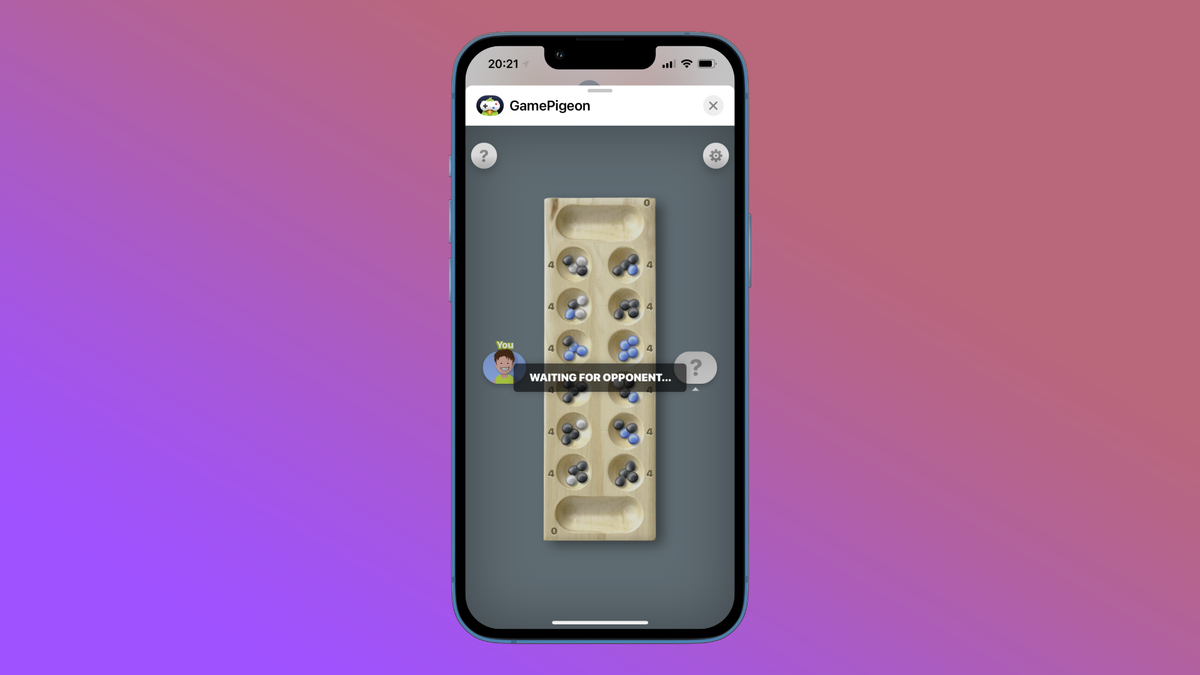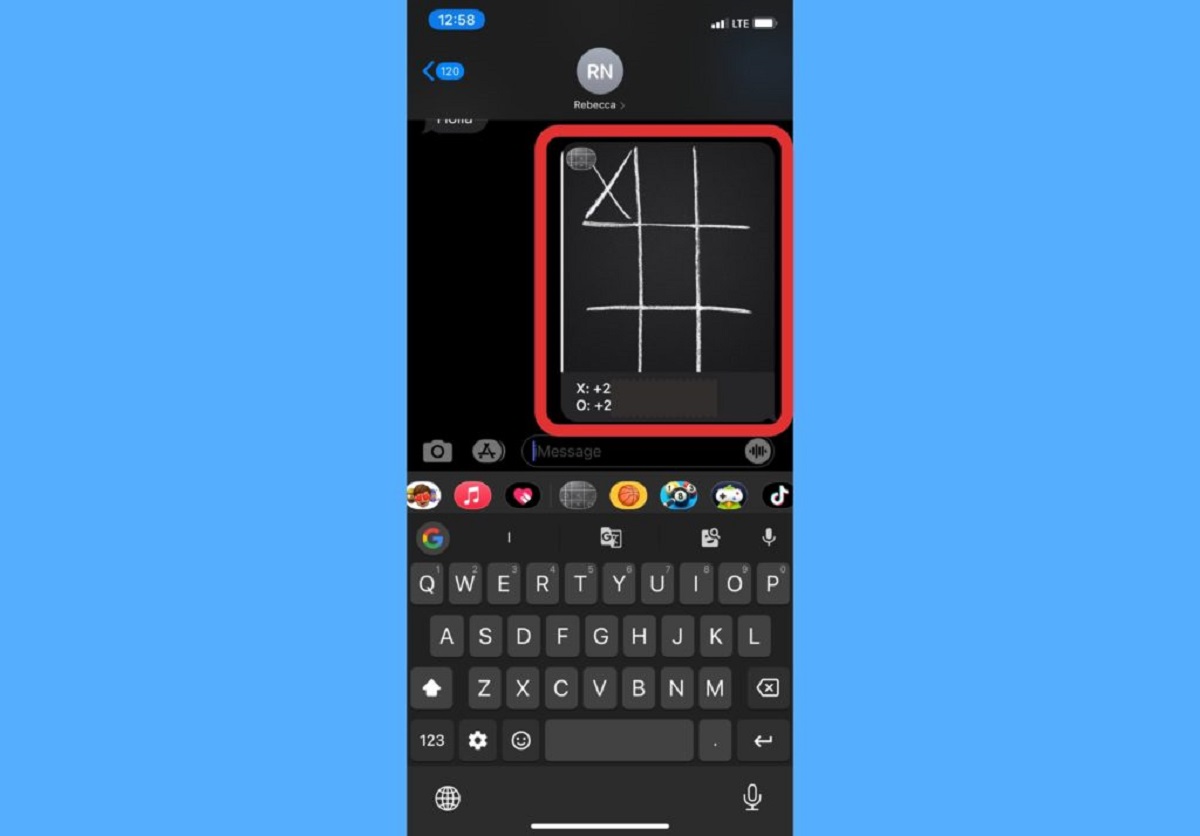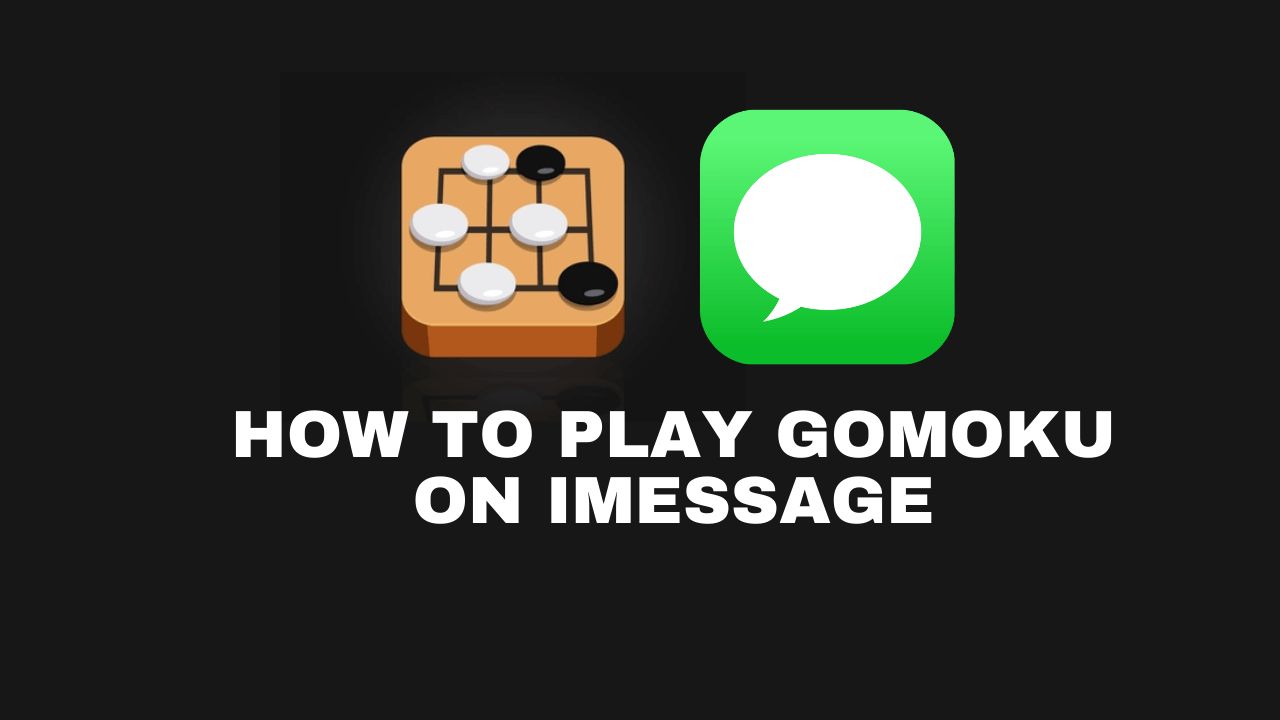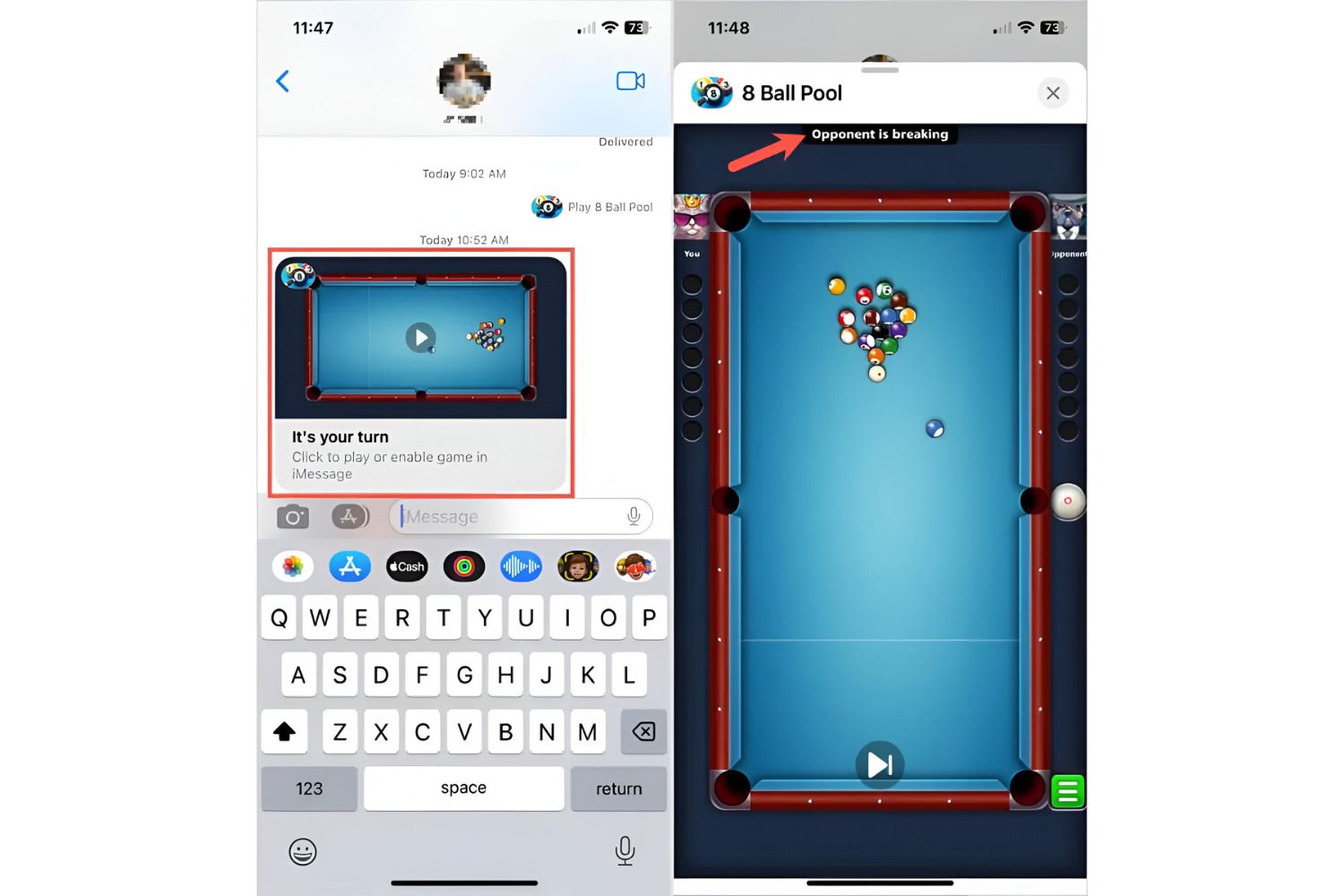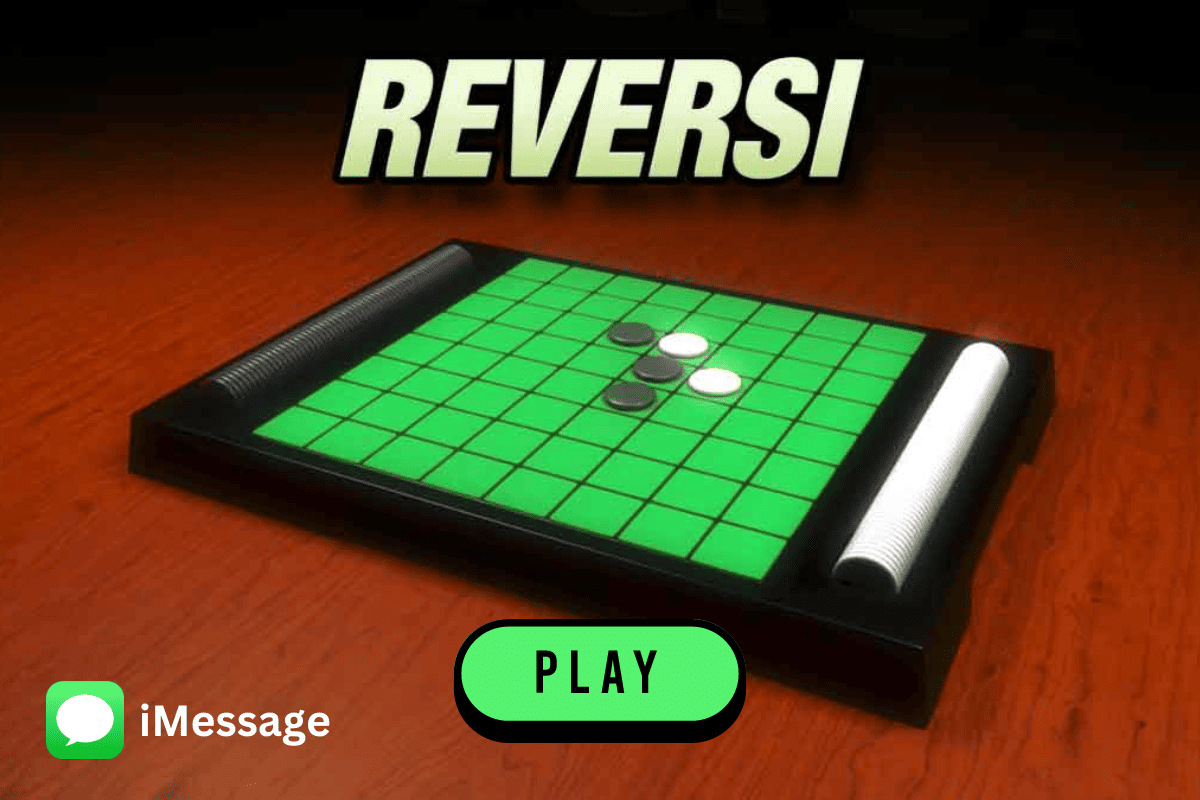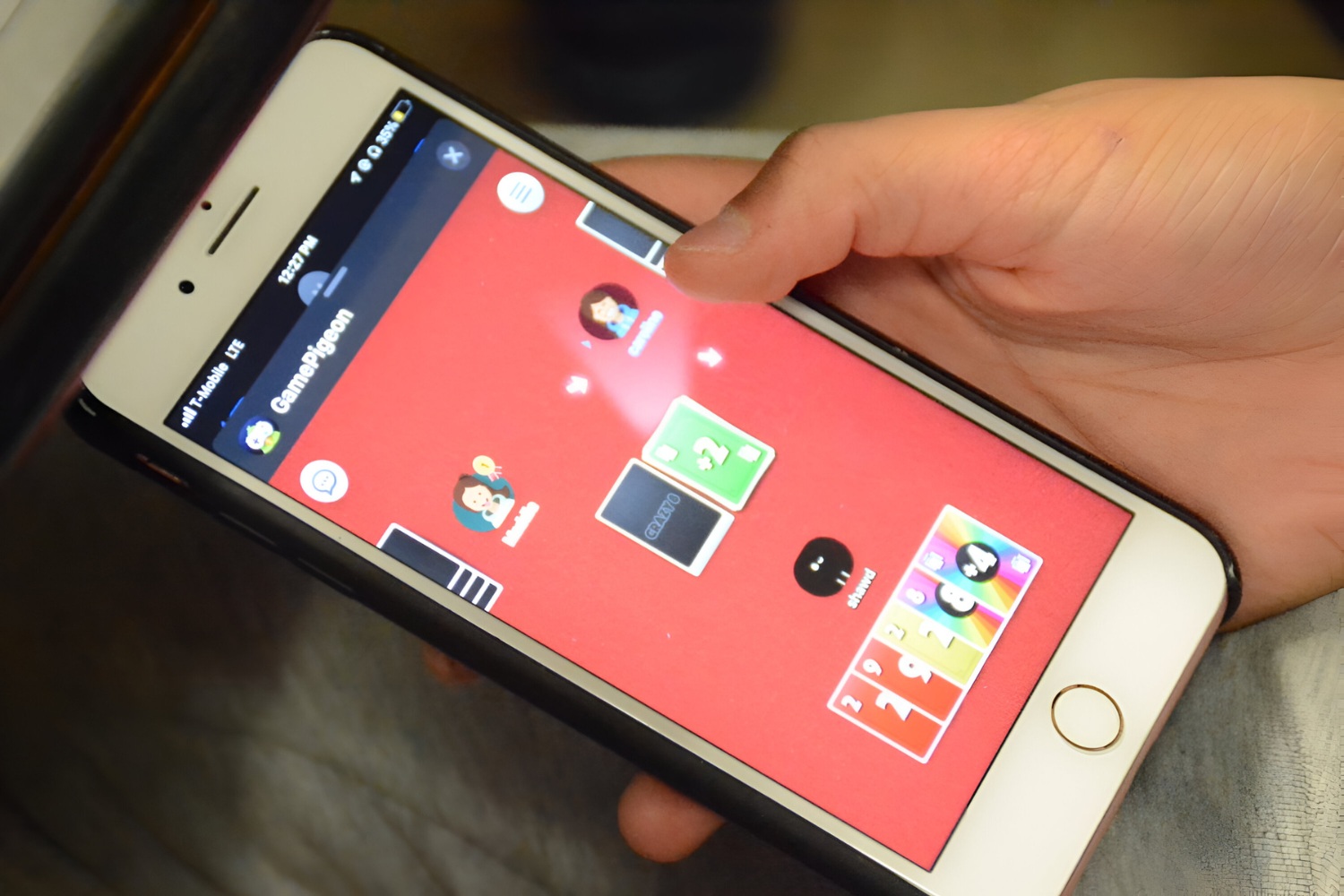Introduction
Mancala is a captivating board game that has been played for centuries across various cultures and regions. With the advancements in technology, Mancala has made its way into the digital world, allowing enthusiasts to enjoy the game conveniently from their smartphones. One such platform is iMessage, which offers a seamless and interactive Mancala experience right at your fingertips.
For those who are unfamiliar with Mancala, it is a strategic game that involves moving and capturing colored stones on a board with multiple pits. The objective is to collect more stones than your opponent by skillfully planning your moves and executing strategic tactics.
Playing Mancala on iMessage brings a whole new level of fun and convenience. Whether you’re looking to pass the time, challenge your friends, or engage in a friendly competition, the Mancala iMessage app provides the perfect opportunity to do so.
In this article, we will explore the advantages of playing Mancala on iMessage, guide you through the process of installing the Mancala iMessage app, familiarize you with the Mancala board and rules, and provide useful tips and strategies to improve your gameplay.
So, if you’re ready to dive into the world of Mancala and experience the thrill of this ancient board game on iMessage, let’s get started!
What is Mancala?
Mancala is an ancient board game that has captured the hearts and minds of players worldwide for centuries. Originating in Africa, Mancala has since spread to different parts of the world, each region adapting the game to reflect its own unique culture and traditions. The word “mancala” itself is derived from the Arabic word “naqala,” meaning “to move.”
The game is typically played on a wooden board with a series of small pits or cups placed in two parallel rows. Depending on the variation, the number of pits can range from 4 to 12. Each pit contains a certain number of colored stones or seeds.
The objective of Mancala is to accumulate more stones than your opponent by strategically moving and capturing them across the board. The players take turns picking up all the stones from one pit on their side and distributing them, one by one, in a counterclockwise direction, dropping a stone into each subsequent pit. The goal is to create strategic moves that allow you to capture your opponent’s stones and secure your own.
Mancala is not only a game of skill and strategy but also requires critical thinking, spatial awareness, and anticipation of your opponent’s moves. The simplicity of its rules allows for players of all ages and skill levels to enjoy and engage in competitive gameplay.
Moreover, Mancala serves as a means of social interaction and connection. It provides an opportunity to gather with friends and family, engage in friendly competition, and create lasting memories.
Over time, Mancala has evolved, with various versions and interpretations existing across different cultures. Some notable variations include Kalaha, Oware, Bao, and many more. Each version has its own distinct rules and strategies, adding to the diversity and richness of the game.
Now that we have a basic understanding of what Mancala is, let’s explore why playing Mancala on iMessage can enhance the overall gaming experience.
Benefits of Playing Mancala on iMessage
Playing Mancala on iMessage offers a plethora of advantages that contribute to an enjoyable and convenient gaming experience. Let’s explore some of the benefits:
1. Accessibility: The Mancala iMessage app is easily accessible on your iPhone, iPad, or Mac, allowing you to play the game anytime and anywhere. Whether you’re waiting for a meeting or commuting on a train, you can engage in a quick game of Mancala to pass the time and keep your mind sharp.
2. Convenience: With Mancala on iMessage, there’s no need to dig out a physical board or carry around small stones. The digital format provides all the necessary components for gameplay, making it highly convenient and portable.
3. Social Connection: iMessage allows you to play Mancala with friends, family, and acquaintances, regardless of their location. You can challenge your loved ones to a friendly game, engage in multiplayer competitions, and even chat and interact while playing. It’s a great way to stay connected and foster relationships.
4. Variety of Opponents: The Mancala iMessage app offers a variety of opponents to play against, including AI-controlled players of varying difficulty levels. This ensures that you can always find a suitable challenge, whether you’re a beginner looking to improve your skills or an experienced player seeking a tough competition.
5. Skill Development: Playing Mancala on iMessage allows you to sharpen your strategic thinking, critical analysis, and decision-making skills. It challenges you to anticipate your opponent’s moves, plan your own moves ahead of time, and adapt your strategy as the game unfolds. These cognitive skills can be transferred and applied to various aspects of life.
6. Education: Mancala is not just a game; it also has educational benefits. It helps improve mathematical skills, such as counting, patterning, and strategizing. Additionally, it promotes logical thinking, problem-solving, and spatial awareness.
7. Relaxation and Entertainment: Engaging in a game of Mancala on iMessage can be a source of relaxation, entertainment, and stress relief. It allows you to immerse yourself in a challenging yet enjoyable activity, helping to take your mind off daily routines and concerns.
Overall, playing Mancala on iMessage combines the traditional gameplay of an ancient board game with the convenience and engagement of modern technology. It offers a range of benefits, from accessibility and convenience to social connection, skill development, and relaxation. Now that we understand the advantages, let’s move on to learn how to install the Mancala iMessage app.
How to Install the Mancala iMessage App
Installing the Mancala iMessage app is a straightforward process that allows you to quickly access and enjoy the game on your iOS device. Here’s a step-by-step guide to help you install the app:
Step 1: Launch the App Store: Open the App Store on your iPhone, iPad, or Mac device. The App Store icon is usually found on the home screen of your iOS device.
Step 2: Search for Mancala: In the search bar at the top of the App Store, type “Mancala” and hit the search button.
Step 3: Choose the Mancala iMessage App: From the search results, look for the Mancala app specifically designed for iMessage. Ensure that the developer is reputable and the app has positive reviews. Tap on the app to view its details.
Step 4: Install the App: On the app’s details page, tap the “Get” or “Install” button to begin the installation process. You may need to authenticate with your Apple ID or use Face ID/Touch ID to confirm the installation.
Step 5: Enable the Mancala App in iMessage: Once the installation is complete, go to your Messages app and open a conversation. Tap on the App Store icon next to the message input field. This will open the iMessage App drawer.
Step 6: Find the Mancala App: In the iMessage App drawer, scroll through the available apps until you find the Mancala app icon. It may be located under the “More” menu if you have a large number of apps installed.
Step 7: Start Playing: Tap on the Mancala app icon to launch the game within iMessage. You can now start playing Mancala with your friends, family, or opponents of your choice.
Remember to familiarize yourself with the rules and gameplay instructions provided within the app to make the most out of your Mancala experience on iMessage.
Now that you have successfully installed the Mancala iMessage app, let’s dive into understanding the Mancala board and the rules of the game.
Understanding the Mancala Board
The Mancala board is the centerpiece of the game, where all the action takes place. Understanding the layout and components of the board is essential for playing Mancala effectively. Here’s a breakdown of the Mancala board:
1. Pits: The board consists of a series of pits or cups arranged in two parallel rows. Each player has their own row of pits. The number of pits can vary depending on the variant of Mancala being played, but commonly, there are 6 pits per player.
2. Mancala Store: Each player has a larger pit, also known as the Mancala or Kalaha, located at the end of their row of pits. This is where captured stones are placed throughout the game. The Mancala is reserved for counting and scoring the stones collected.
3. Stones: The game is played with a set of small stones or seeds. These stones are placed in the pits at the beginning of the game and are used for gameplay maneuvers.
4. Player Orientation: Each player sits opposite their row of pits, facing the board. The player’s Mancala is at their right-hand side.
The Mancala board may vary in design and material, ranging from simple wooden boards to more intricate and decorative ones. However, the basic layout and functionality remain the same.
Now that you have a grasp of the Mancala board’s structure, let’s move on to understanding the rules of the game, which will guide you in playing Mancala on iMessage effectively.
Rules of Mancala
Mancala follows a set of straightforward rules that govern the gameplay. Understanding these rules is essential for successfully playing the game on iMessage. Here are the basic rules of Mancala:
1. Setup: At the start of the game, an equal number of stones are placed in each pit on the board, except for the players’ Mancalas. The number of stones per pit may vary depending on the version being played.
2. Turn-Taking: The game is played in turns, with players taking alternating moves. The player who goes first is typically determined by mutual agreement or a random selection process.
3. Making a Move: On their turn, a player selects one of the pits in their row and collects all the stones from that pit. The player then distributes the stones, one by one, in a counterclockwise direction, dropping a stone into each subsequent pit (including their Mancala) until all the stones from their hand are distributed.
4. Skipping the Opponent’s Mancala: When distributing stones, a player skips the opponent’s Mancala. The player only drops stones into their own pits.
5. Capturing Stones: If the last stone in a player’s distribution falls into an empty pit on their side of the board, and the pit opposite to it (on the opponent’s side) contains stones, the player captures all the stones in the opponent’s pit along with the last stone placed. These captured stones are placed in the capturing player’s Mancala.
6. Continuous Moves: If a player’s last stone falls into their own Mancala after distributing, they earn an additional turn and can continue making moves. This process can be repeated as long as the last stone falls into the player’s Mancala.
7. Ending the Game: The game ends when one player’s row of pits is empty. The remaining stones on the opponent’s side are then captured by the player who still has stones and placed in their Mancala. The player with the most stones in their Mancala is declared the winner.
It’s important to note that these rules serve as a foundation for Mancala gameplay, but specific variations may have additional rules or nuances. It’s always helpful to familiarize yourself with the specific rules and variants being played before starting a game.
Now that we have a clear understanding of the rules, let’s proceed to the next section, where we will discuss how to start a game of Mancala on iMessage.
Starting the Game
Once you have installed the Mancala iMessage app and are familiar with the rules, it’s time to start playing. Here’s a step-by-step guide on how to begin a game of Mancala on iMessage:
Step 1: Open iMessage: Launch the iMessage app on your iOS device and open a conversation with the person you want to play Mancala with. Ensure that both you and your opponent have the Mancala iMessage app installed.
Step 2: Access the Mancala App: Tap on the App Store icon next to the message input field to open the iMessage App Drawer. Scroll through the apps until you find the Mancala app icon and tap on it.
Step 3: Select a Game Type: The Mancala iMessage app provides various game types to choose from. You can select options like Single Player, Challenge Friends, or even Multiplayer tournaments. Pick the game type that suits your preference.
Step 4: Invite Your Opponent: If you’re playing against a specific opponent, you can send them an invitation to play Mancala by tapping on the “Invite” or “Challenge” button within the app. They will receive a notification and can join the game from their end.
Step 5: Customize the Game: Some Mancala iMessage apps allow customization options, such as selecting the number of pits or choosing the difficulty level. Take a moment to customize the game settings according to your preferences.
Step 6: Start the Game: Once both players have joined the game, tap on the “Start” or “Play” button to begin the Mancala match. You will be taken to the game screen where the Mancala board will be displayed, and you can take turns making your moves.
It’s important to communicate with your opponent throughout the game using the chat options provided by the Mancala iMessage app. This adds an extra layer of interaction and fun to the gaming experience.
Now that you know how to start a game of Mancala on iMessage, let’s proceed to the next section, where we will explore the mechanics of making a move in the game.
How to Make a Move
Now that the game has started, it’s time to make your moves and strategically distribute the stones on the Mancala board. Here’s a step-by-step guide on how to make a move in Mancala on iMessage:
Step 1: Choose a Pit: On your turn, carefully examine the board and select one of the pits in your row that contains stones. This will be the starting point for your move.
Step 2: Collect the Stones: Once you have chosen a pit, pick up all the stones from that pit. Your hand now holds the stones you will distribute across the pits.
Step 3: Distribute the Stones: Starting from the chosen pit, distribute the stones, one by one, in a counterclockwise direction. Drop one stone into each subsequent pit, including your Mancala if you reach it during the distribution.
Step 4: Follow the Board’s Layout: As you distribute the stones, adhere to the layout of the Mancala board. Skip your opponent’s Mancala and drop stones only into the pits on your side of the board.
Step 5: Adapt to Special Moves: Pay attention to any special move opportunities that may arise during your turn. For example, if the last stone in your distribution lands in an empty pit on your side while the opposite pit on your opponent’s side contains stones, you can capture those stones.
Step 6: Continue Making Moves: If the last stone in your distribution falls into your own Mancala, you earn an extra turn. Keep making moves until the last stone lands in a pit or your opponent’s Mancala, which signifies the end of your turn.
Remember, the key to success in Mancala is strategic thinking and planning your moves ahead of time. Anticipate your opponent’s moves, look for capturing opportunities, and adapt your strategy as the board state changes.
Continue taking turns with your opponent, making moves according to these steps, until one player’s row of pits is empty, which leads to the end of the game. At that point, the stones that remain on the opponent’s side of the board are captured by the player with remaining stones, and the winner is determined by counting the stones in each player’s Mancala.
Now that you know how to make a move in Mancala on iMessage, let’s explore the concept of capturing stones in the game.
Capturing Stones
Capturing stones is an essential aspect of Mancala that allows players to gain an advantage by collecting their opponent’s stones. Understanding how capturing works is crucial for devising effective strategies in the game. Here’s what you need to know about capturing stones in Mancala:
1. Capturing Opportunity: When distributing your stones, if the last stone lands in an empty pit on your side of the board, and the pit opposite to it on your opponent’s side contains stones, you have an opportunity to capture those stones.
2. Capturing Process: To capture the stones, you pick up all the stones in your opponent’s pit along with the last stone you dropped. These captured stones are then placed in your own Mancala. By capturing stones, you prevent your opponent from using them and increase the number of stones in your own Mancala.
3. Mandatory Rule: In some versions of Mancala, capturing is mandatory if a capturing opportunity arises. This means that if you have the chance to capture, you must do so instead of making any other move.
4. Multiple Captures: It is possible to make multiple captures in a single turn by creating a chain of capturing opportunities. If, during your move, a new opportunity to capture arises, you must continue capturing until no further opportunities exist. This can significantly impact the overall outcome of the game.
5. Strategic Importance: Capturing plays a vital role in Mancala, as it allows you to gain not only more stones but also control over various areas of the board. By capturing your opponent’s stones, you limit their potential moves and increase your chances of securing victory.
Keep in mind that capturing requires careful planning and observation of the board state. Look for opportunities to create capturing chains and anticipate your opponent’s moves to maximize your capturing potential.
Now that you understand the concept of capturing stones in Mancala, let’s move on to the next section where we will explore the different ways to end the game.
Ending the Game
The game of Mancala concludes when certain conditions are met, determining the winner based on the stones collected. Here’s how the game comes to an end in Mancala:
1. Empty Row: The game ends when one player’s row of pits is entirely empty. This means that all the pits on one side of the board contain no stones. The player whose row of pits is empty no longer has any valid moves and must end their turn.
2. Capturing Remaining Stones: Once the game ends, the player who still has stones remaining in their row of pits captures all the stones on the opponent’s side of the board. The captured stones are placed in the capturing player’s Mancala.
3. Counting Stones: After capturing the remaining stones, both players count the number of stones in their respective Mancalas. The player with the highest number of stones in their Mancala is declared the winner.
It’s important to note that in some variations of Mancala, there may be additional rules or conditions for ending the game. For example, certain versions may require a player to capture a specific number of stones or reach a certain score threshold to win.
At the end of the game, take a moment to appreciate the strategies employed and the outcome of your gameplay. Reflect on the moves made and the tactics used, as this can help you improve your skills and strategies for future matches.
Now that you understand how the game of Mancala concludes, let’s move on to the next section, where we will provide some useful tips and strategies to enhance your gameplay on iMessage.
Tips and Strategies
Mastering Mancala requires a combination of strategic thinking, foresight, and adaptability. By incorporating these tips and strategies into your gameplay, you can improve your chances of success and outwit your opponents:
1. Plan Ahead: Think several moves ahead and consider the potential outcomes of each move. Anticipate your opponent’s moves and adjust your strategy accordingly. Having a well-thought-out plan can give you a significant advantage in the game.
2. Focus on Capturing: Look for opportunities to capture your opponent’s stones. Capturing not only increases your stone count but also limits your opponent’s options. Try to create chains of captures to gain further advantage on the board.
3. Control Key Pits: Identify the pits on the board that can provide strategic advantages, such as those with potential capturing opportunities or those leading to favored moves. Focus your efforts on controlling these key pits to manipulate the flow of the game in your favor.
4. Balance Offensive and Defensive Moves: It’s crucial to strike a balance between offensive and defensive moves. While capturing is important, make sure to also consider protecting your own stones from being captured by your opponent. Assess the risks before making each move.
5. Learn from Your Opponent: Pay attention to your opponent’s strategies, moves, and patterns. By observing their gameplay, you can gain insights into their strengths and weaknesses. Use this knowledge to adjust your own tactics and exploit their vulnerabilities.
6. Create Dilemmas for Your Opponent: Force your opponent into difficult choices by creating dilemmas on the board. Make moves that present your opponent with unfavorable options or force them to make moves that work in your favor. The more choices you control, the greater your advantage becomes.
7. Stay Flexible: Adapt your strategy as the game progresses. Be willing to change your approach based on the evolving board state and the moves made by your opponent. Flexibility allows you to respond effectively to unexpected situations.
8. Practice and Analyze: The more you play Mancala, the better you will become. Take the time to analyze your gameplay and identify areas for improvement. Experiment with different strategies and learn from your mistakes to refine your skills.
Remember, Mancala is not just about making moves – it’s about outsmarting your opponent through strategic thinking and calculated decisions. Practice, experience, and a deep understanding of the game will contribute to your success in becoming a skilled Mancala player.
Now that you have some valuable tips and strategies, it’s time to put them into action and enjoy the excitement of playing Mancala on iMessage!
Conclusion
Mancala is a timeless and engaging board game that has captivated players for centuries. With the advent of technology, playing Mancala on iMessage brings a new level of convenience, accessibility, and social interaction to the game. Whether you’re a seasoned Mancala player or new to the game, iMessage provides an excellent platform to enjoy this strategic and thought-provoking experience.
In this article, we explored the basics of Mancala, including its origins and the objective of the game. Additionally, we highlighted the benefits of playing Mancala on iMessage, such as the ability to play with friends and family from anywhere, the convenience of digital gameplay on your iOS device, and the development of critical thinking and problem-solving skills.
We also provided a step-by-step guide on how to install the Mancala iMessage app and discussed the various components of the Mancala board. Understanding the rules of the game, making moves, capturing stones, and the ways in which the game can come to an end were also covered in detail.
Furthermore, we offered valuable tips and strategies to enhance your gameplay, such as planning ahead, focusing on capturing, balancing offense and defense, and staying flexible throughout the gameplay. By incorporating these strategies into your Mancala sessions, you can elevate your skills and increase your chances of success.
Playing Mancala on iMessage provides an immersive and interactive experience, fostering social connection, mental stimulation, and enjoyment. So, whether you’re looking for a challenging intellectual exercise or a fun way to pass the time, Mancala on iMessage is an excellent choice.
Now that you have a comprehensive understanding of Mancala and how to play it on iMessage, it’s time to invite your friends, start a game, and immerse yourself in the strategic world of Mancala. Enjoy the game and may your moves be filled with precision, foresight, and victory!







